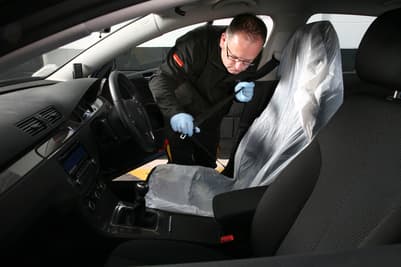What is checked in an MOT?
An MOT (Ministry of Transport) was first introduced in the UK in 1960. It is an annual test conducted on a vehicle to check safety, road worthiness and to see how economical the vehicle is and if it abides to government law and regulations. Any vehicle that does not meet any of the expectations set in this test will be deemed not road worthy and will be expected to be repaired to MOT standards.

There are a number of different aspects of the vehicle that get checked in an MOT, such as –
Tyres – The grip of the tyres are tested. The tread depth is also checked and the tyres are checked for wear.
Electrical equipment – All the electrical components of the vehicle are tested to make sure that they are responsive, along with the brake lights, headlights, fog lights and indicators.
Steering - steering is also tested on the strength of the wheel, how responsive the steering is, how heavy the steering is and the condition of the steering wheel itself.
Suspension – The suspension is checked for any damage and corrosion. The shock absorbers are also checked.
Brakes – The stopping distance is checked to see how effective the brakes are. The pedals are also thoroughly checked for damage.
Seat belts and seats – Seatbelts and seats are checked for safety.
Exhaust and emissions – A test to see how economical the vehicle is through the exhaust emissions is done. Leaks in the exhaust and fuel system are also checked.
Mirrors, wipers and windscreen – All windows, wipers and mirrors are checked for damage.
Vehicle Identification Number – The VPN is checked to make sure that it is correct for that vehicle.
Did you enjoy this blog post? |
1 people found this review helpful



